The restoration of Saint-Paul Church
A renovation that is now essential
The history of Saint Paul's Church is marked by a series of restorations which have partially erased the ravages of climatic hazards and conflicts.
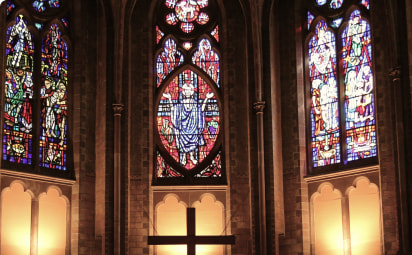
In the 2000s, the renovation of its rose window and part of its stained glass windows, the repair of the façade followed by the redevelopment of the parvis (with the help of the City, the Drac and the Region) have already restored the luster to the building.
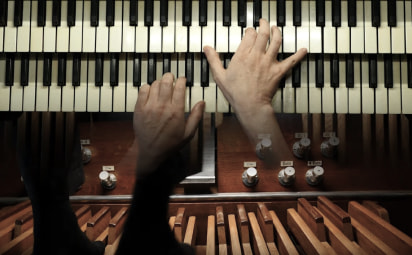
Among the fragile elements of the church, we count the Walcker organ, which occupies a special place since it is the largest symphonic organ in Alsace, also listed as a Historic Monument.
A delicate musical instrument, it requires a controlled environment in terms of temperature and humidity to ensure its long-term preservation. Unfortunately, this is no longer the case.
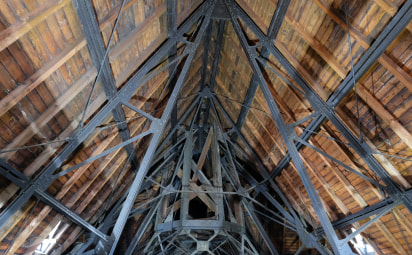
Today, the roof shows signs of water infiltration, as do some stained glass windows, which require urgent intervention to preserve the value and beauty of this historic monument.
A restoration
around 4 major projects
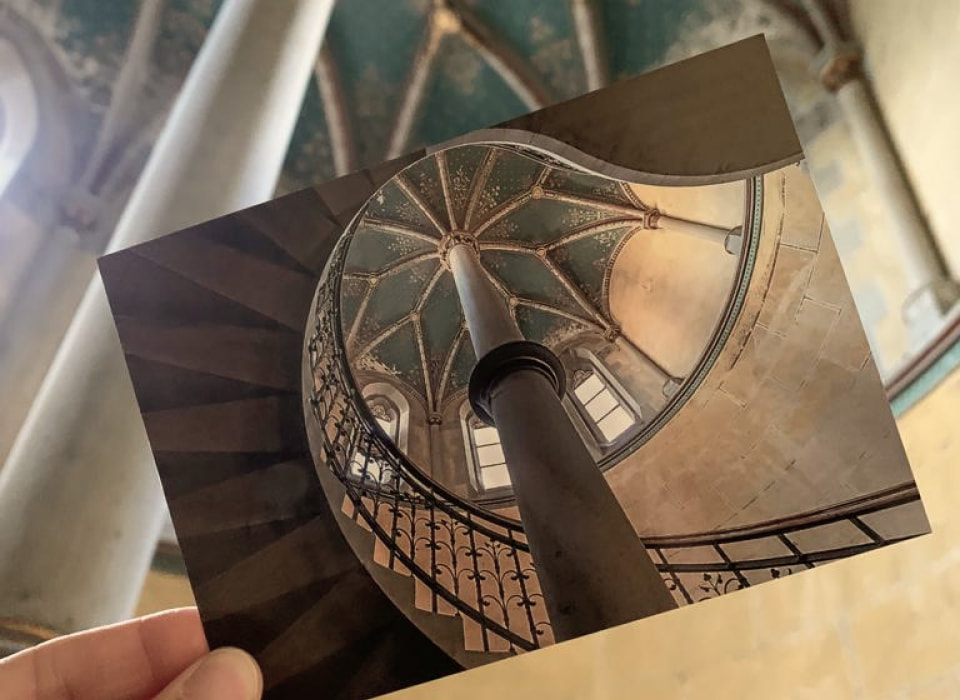
The creation of PMR access
(People with Reduced Mobility)
As a public building, the Saint-Paul church is classified as category 5 ERP, meaning that people with disabilities must be able to move around the building independently regardless of their disability.
For accessibility for people in wheelchairs or with very reduced mobility, a lift system integrated into the steps on the right side of the church is provided.
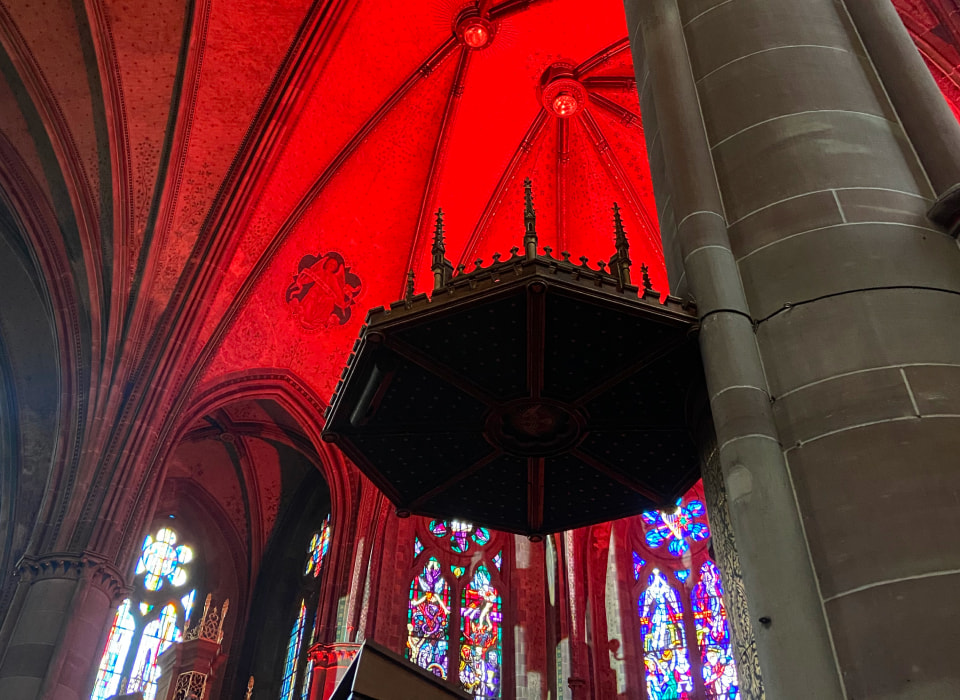
Upgrading the fire safety system
The fire at Notre-Dame de Paris cruelly highlighted the vulnerability of religious buildings with their wooden frames and roof trusses. It is now desirable to strengthen the fire safety system in the attic of Saint-Paul, particularly by installing smoke extraction units.
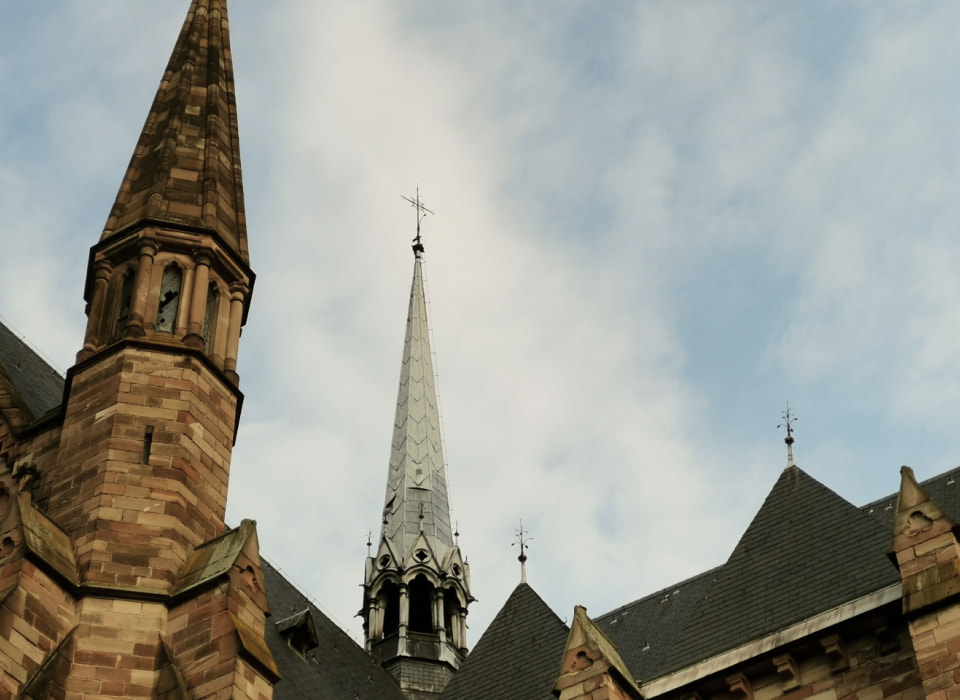
Roof restoration
A study on the framework was carried out by Atelier Ergon.
Its wood and metal framework consists of a main frame made of assembled metal profiles, on which wooden structures rest. It was originally covered with Schuppen slates (in scales), which were gradually replaced between 1970 and 1998 by a more traditional installation.
The restoration includes the treatment of corroded areas on the metal frame and damaged elements on the wooden frame. The roof, which has numerous leaks and diffuse moisture stains, particularly in the valleys, ridge and dormers, will also be treated.
The spire, although it underwent temporary repairs following the 1999 storm, is in a worrying state of conservation.
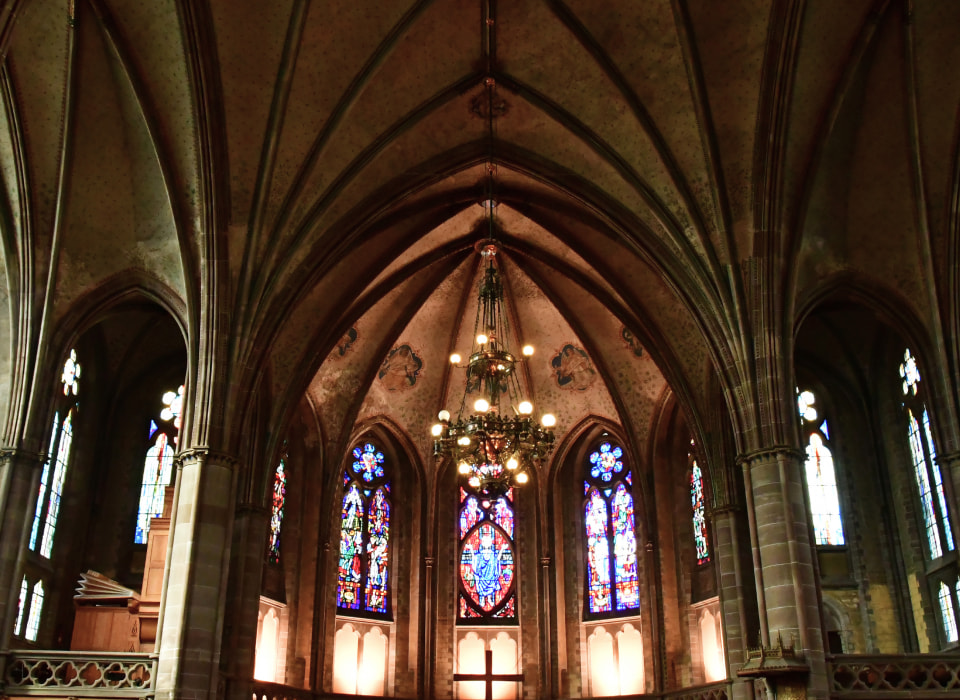
Restoration of stained glass windows
The stained glass windows of the Saint-Paul church are composed of three distinct campaigns:
- the original 19th century stained glass windows
- the stained glass windows of Éric de Saussure from 1945
- Ernest Werlé's stained glass windows from 1964-1966
A diagnosis carried out by Delphine Geronazzo notes a varied state of conservation with a clear alteration of the oldest: gaps, deformations and breaks.
The conservation of all the decorations (stained glass, metal ornaments, etc.) will be undertaken by specialized restorers.
Duration and cost of work: the different phases*
*These amounts are estimated as close to reality as possible, but remain estimates that result from architectural studies. The schedule elements mentioned will be subject to processing times and administrative and subsidy authorizations, in addition to the financial capacity of the project owner during the operation.
Phase 0
Securing masonry and metalwork
Restoration of the East and South steps
Making it accessible to people with reduced mobility
Consolidation of damaged decorations on two vaults in the nave
-
Launch of works2026
-
Duration5 months and a half
-
Amount of work, including studies800 000 €
Phase 1
Restoration of the spire + roof
+ framework of the transept crossing.
-
Launch of works2026
-
Duration6 months
-
Amount of work, including studies1 200 000 €
Phase 2
Restoration of the roof, the framework and the stained glass windows adjacent to the transept in two phases of work
(one phase per arm of the transept, North then South)
-
Launch of works2027
-
Duration6 months per installment
-
Amount of work, including studies2 000 000 €
Phase 3
Restoration of the roof, framework and adjacent stained glass windows of the nave and choir, in two phases of work
(nave/main vessel, then choir)
-
Launch of works2029
-
Duration6 months per installment
-
Amount of work, including studies2 200 000 €
Phase 4 Restoration of the roof, the framework and the adjacent stained glass windows of the side aisles.
-
Launch of works2031
-
Duration6 months per installment
-
Amount of work, including studies1 600 000 €
Phase 5 Restoration of the roof and masonry of the East and West portals. Restoration of the Emperor's and Generals' staircases.
-
Launch of works2032
-
Duration6 months
-
Amount of work, including studies960 000 €